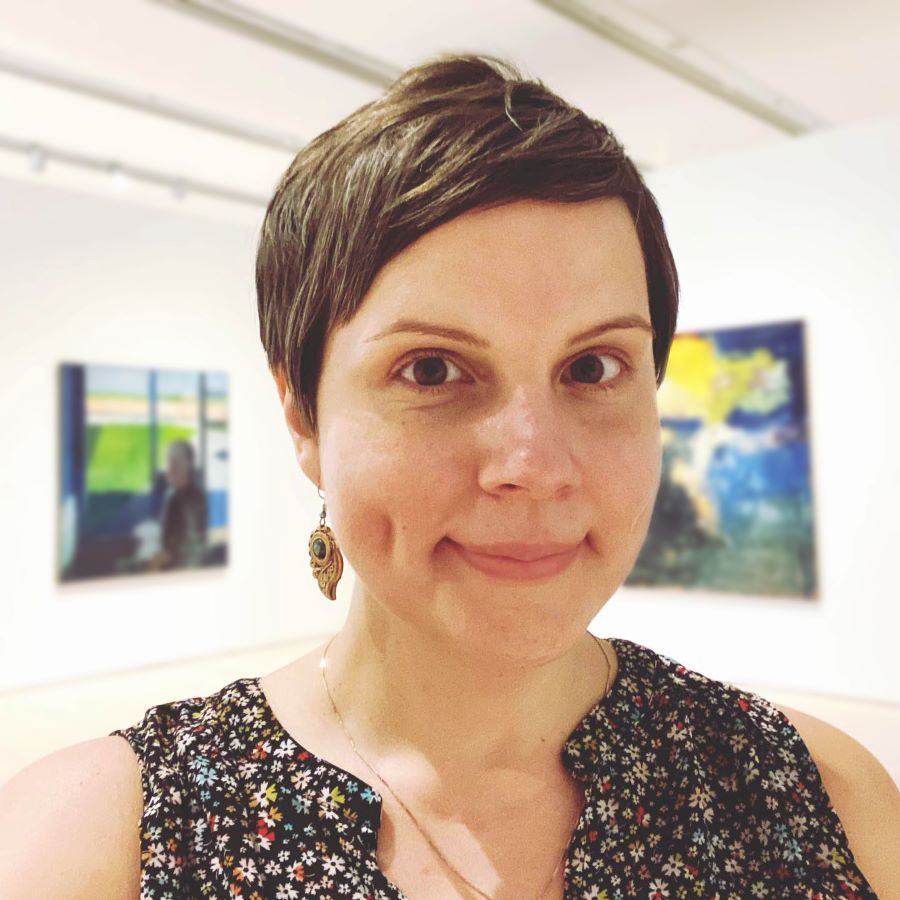
Our first Woman of the Week of 2023 is Kristina Baktis, a licensed art therapist, nominated for her role as a facilitator of many of our Craft ‘n’ Sip gatherings, but also as one of the newest board members at St. Phoebe Center for the Deaconess. You see her here with her brother Dimitri, part of her portrait of him, and with her parents at Pascha 2022 at their parish. We asked her to tell you how she decide what becoming an art therapist entails:
“I never thought “When I grow up, I’ll be an art therapist.” I had no idea that this profession existed until I was a junior in college. I did know that I wanted to find a career where I was helping others. Also, I was a creative kid, making art, crafting, designing costumes, and putting on shows. I considered pursuing a career in the arts. My desire to help others was cultivated at home. I watched my parents live their faith daily. My mom as a matushka, teacher, and caregiver, and my dad as a priest and army chaplain. From a young age, I was encouraged to take part in ministry, by participating in church services and helping others in the community. My parents also encouraged my involvement in the arts.
“However, the biggest influence on my work is my brother Dimitri. Dimitri was born blind with cerebral palsy and epilepsy. He didn’t talk but he communicated clearly through body language and vocalizations. I connected with Dimitri through music and art. I would sing to him, we’d play instruments, and I’d make him maracas from mint containers and find objects he could use as drums. Dimitri loved God and embodied the Psalm ‘Clap your hands oh people, shout to God with songs of joy!’ He loved hearing the music at church, the bells on the censor, and smelling the incense. It was a joy to participate in the liturgy through his experience.
“I wasn’t sure what I wanted to study at college so I picked art history. However, after taking a studio art class, it became clear that I felt more connected to spending hours in the studio creating my own pieces. I switched my major to art, design and media, and chose electives in psychology, criminology and sociology. I became interested in conceptual art where the idea behind the work is more important than the finished product. I created installations about environmental issues, mental health, memory, and identity.
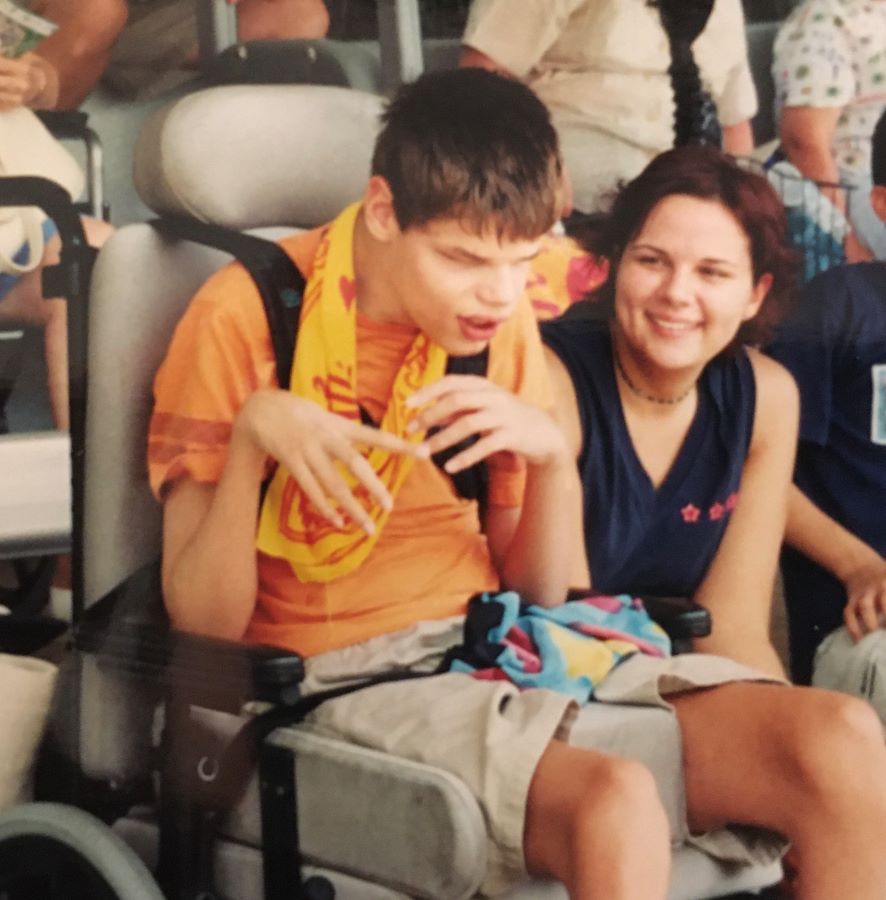
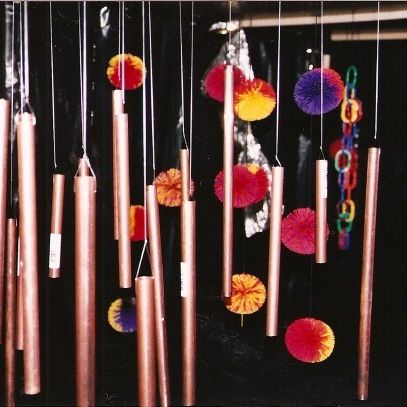
“In my senior year of college, I discovered art therapy and planned to pursue a Master’s program at Pratt. I was working on building an installation for my senior project. It would be a portrait of my brother that he himself could experience. The space would be totally accessible for him as a person who is blind and in a wheelchair. However, the majority of people would be disabled in this space, forced to crawl through a dark space, coming in contact with objects hanging from the ceiling. Objects that Dimitri enjoyed but could be unpleasant for other people. Just before winter break, Dimitri died. While he was never able to experience his portrait, the installation helped me process my loss and share my brother with my community.
“After graduation, I took time to grieve. I wasn’t accepted into an art therapy program and felt lost. I started work at a bakery that employed artists. They encouraged me to go back to school and pursue art therapy. After applying to grad schools, I took some time at SS Mary and Martha monastery in South Carolina for rest and reflection. I asked God to show me the path to help the most people. I prayed, “I just want to help people. So if I don't get into grad school, maybe I'm supposed to be a nun." When I got home, I was accepted to both of the schools that I applied to and studied art therapy. I have been an art therapist for over ten years. I’ve had the opportunity to provide support to children and adults with developmental disabilities, people with addiction, trauma, depression, bipolar disorder, and psychosis.”
Axia!
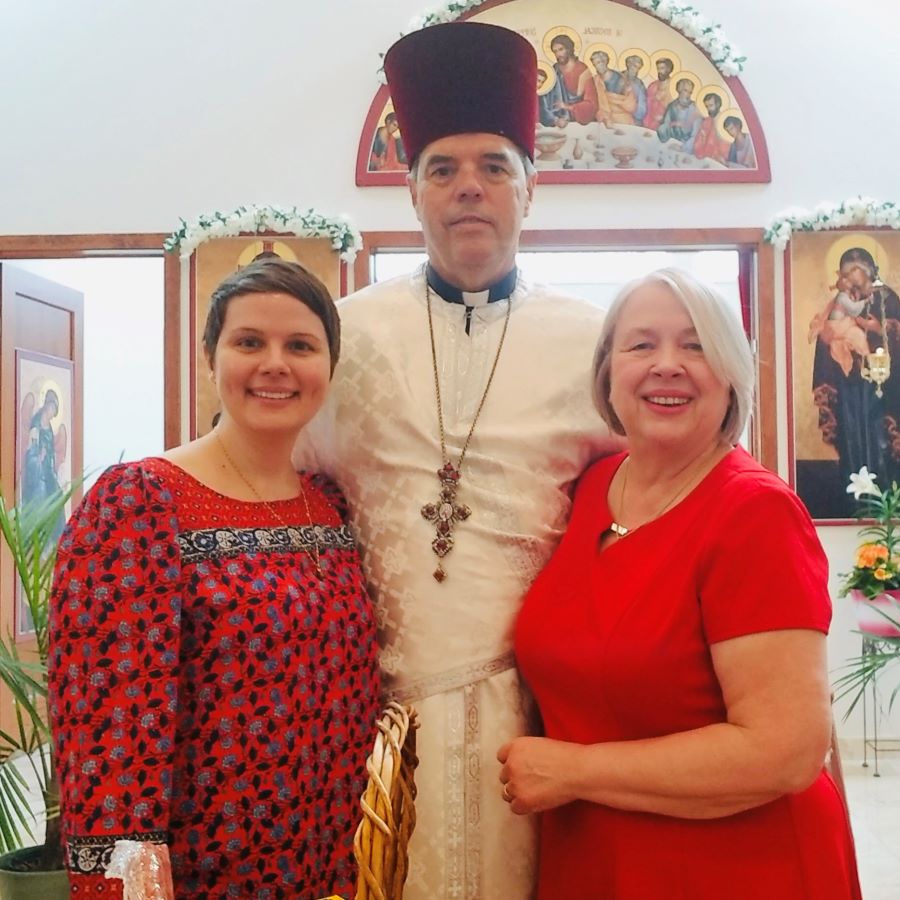
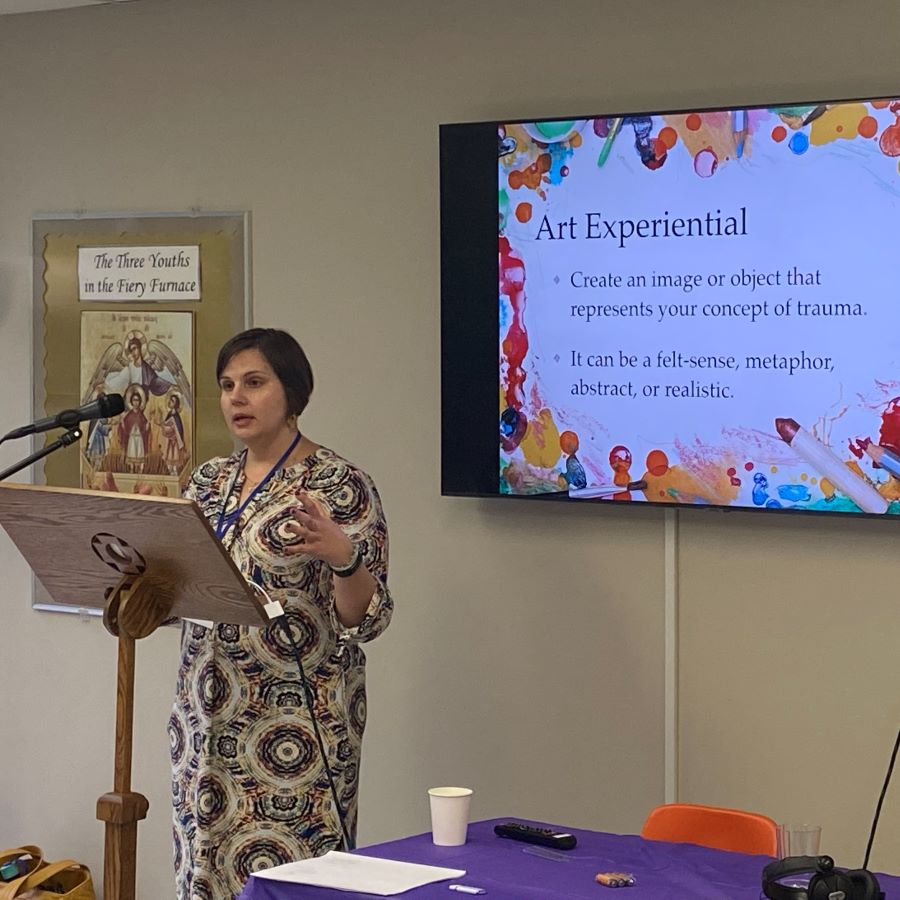
Kristina Baktis is our Woman of the Week, nominated for her work as an art therapist and board member. You see her here delivering a talk at the annual Orthodox Christian Association of Medicine, Psychology, and Religion (OCAMPR), painting at the Pawel Althamer's exhibit at the New Museum in New York City, and letting off some steam with Munsch. We asked her what she would like people to know about art therapy and how she works with people with severe mental illness or disabilities:
“Not many people know what art therapy is. A common misconception is that it is just making art or coloring. While making art has value as a form of relaxation or expression it’s not therapy. Art therapy requires a relationship with the therapist who helps guide the process and uses art materials to facilitate growth and change. In my role as a therapist, I serve as a witness to a client’s experience, help them gain insight, and provide interventions to help them move through stuck points. Additionally, I provide some art education to help clients effectively express themselves with art materials.
“Many people come to art therapy with judgments about what is ‘good art’ and that ‘artists' are people who can create a masterpiece without trying. I help people trust their own creative capacity and challenge negative associations about art. The process of making art can improve a client’s self-esteem as they create original works and build mastery with materials.
“The people that I see in therapy are the people that society would prefer to ignore or discard altogether. I try to see each of my clients for who they are, a child of God. Seeing them as a person that deserves love and respect. Only then can I be an effective therapist.
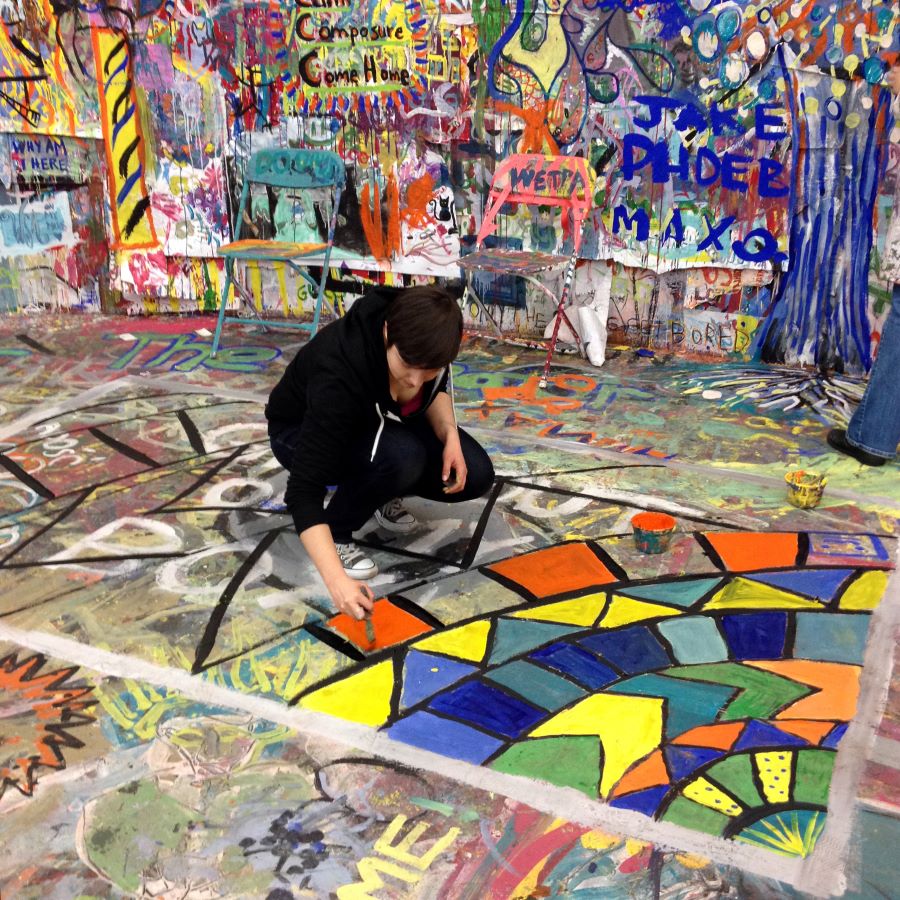
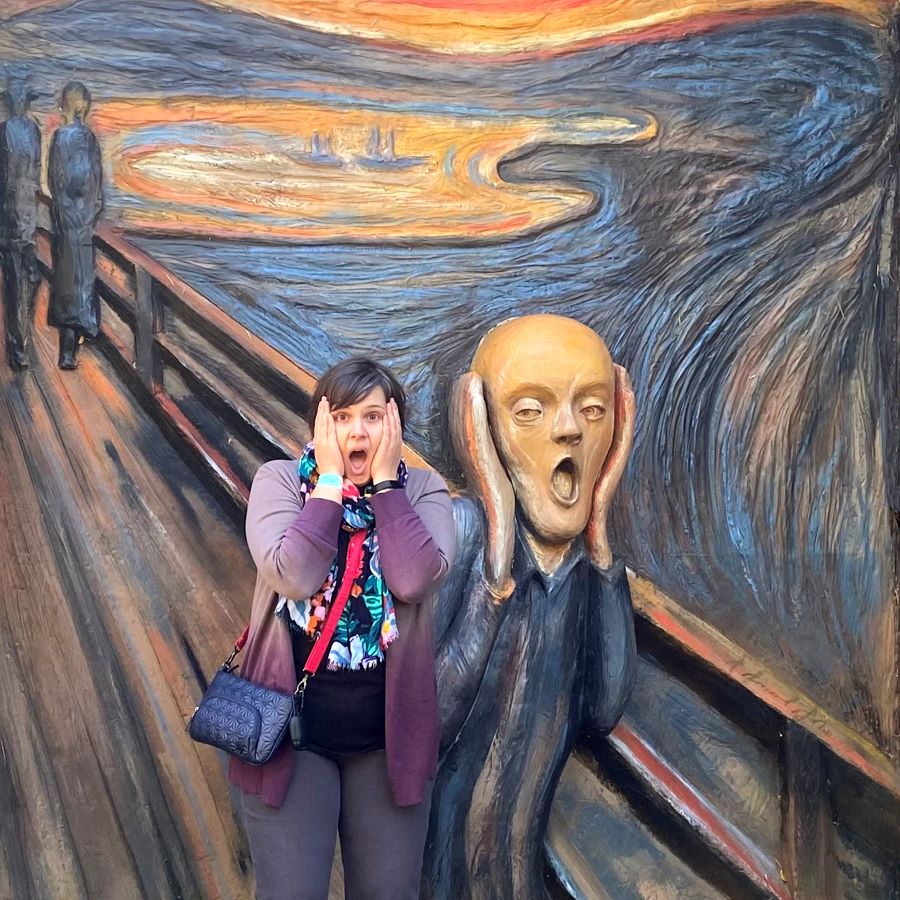
“When I started the art therapy program in an adult day center, I was told by the staff, ‘These are the people who love art, you should take them to your class. These people don’t do much, you don’t need to bother with them.’ I wasn’t there to provide therapy for just the people who liked art, but to help all the clients. So I started focusing on the clients I was told to ignore. The staff had low expectations because they had only encountered art teachers or art facilitators who had unsuccessfully attempted to get these clients to make aesthetically pleasing craft projects. Because of my experience connecting with my brother, I was comfortable working with someone who doesn’t talk or has limited motor skills. I was able to use art materials to engage these clients in a relationship. People who ‘did nothing’ were now making art and communicating through art. Attitudes started slowly changing. After a few years, staff would ask me, ‘We have this new person, that’s struggling. Do you think art therapy will help?’
“Bessel van der Kolk writes in The Body Keeps the Score, ‘Without imagination, there is no hope.’ Art therapy strengthens our capacity for imagination and restores our hope.”
As always, we asked our Woman of the Week, Kristina Baktis, to tell you about her morning routine. She is also giving you a glimpse of her prayer corner:
“I have two cats, who wake me up about 10 minutes before my alarm goes off. So my day starts with feeding my cats, prayer, coffee, breakfast, and getting ready for work.
“I’ve set up my icon corner with a scented candle, icons of saints that hold special meaning to me (St. Christina, St. Demetrius, Matushka Olga and Saints of North America, the Myrhh-bearing Women, Mother Maria), and objects that help me stay centered.
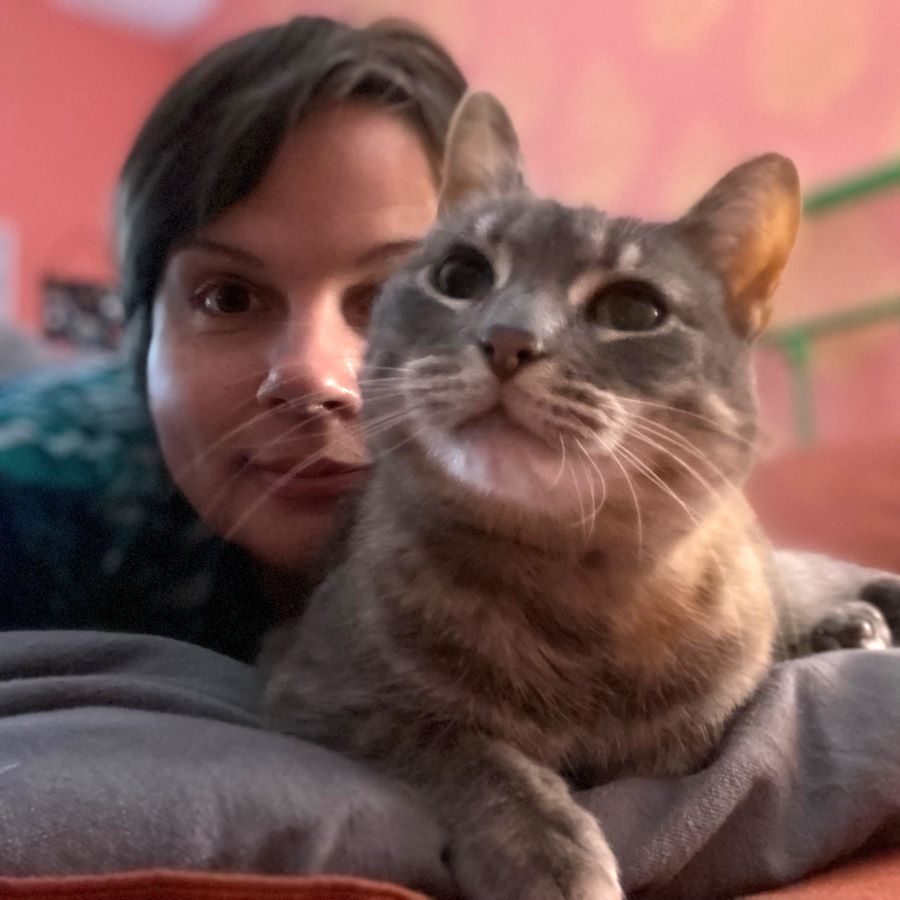
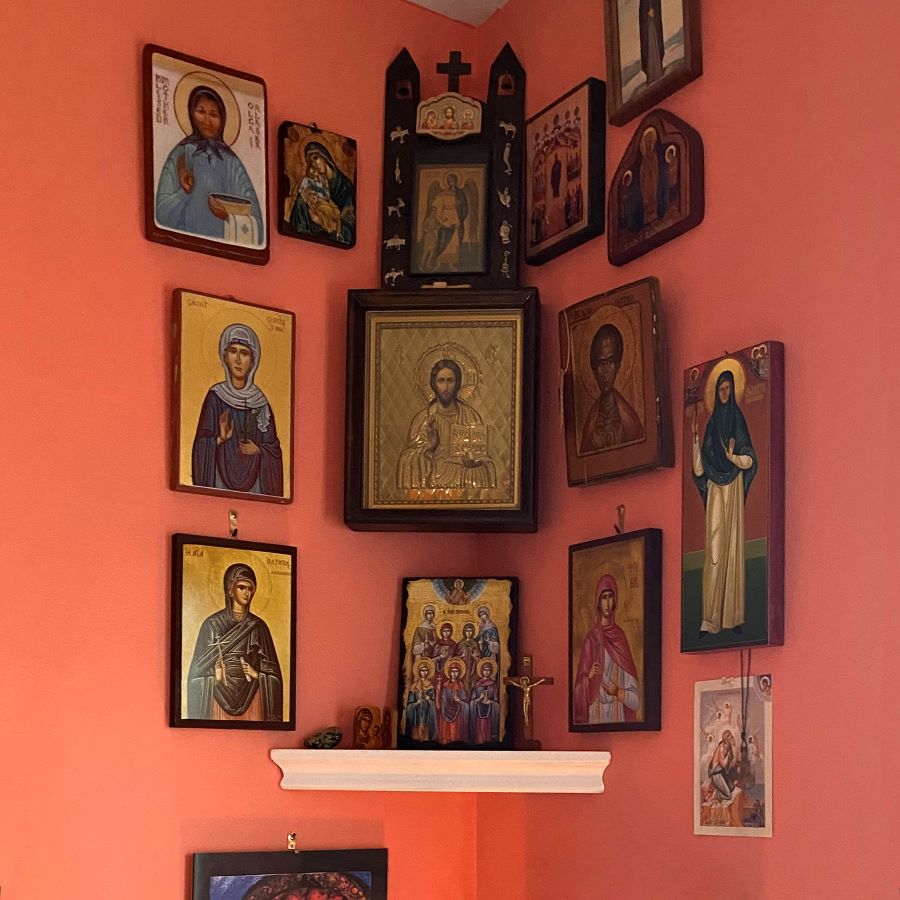
“I have been sober for a while so I have a serenity rock and breathe bracelet from past sponsors that I keep in my icon corner. I also have a picture of a camel that was given to me by a sober friend. In the recovery community, the camel is used to illustrate the importance of prayer. In the morning the camel kneels down to prepare to carry their load for the day. At night the camel kneels down and unloads the day's burdens.
“My morning prayer routine changes with the season. I read the daily Gospel and Espistle. I say specific prayers for people I know, something or someone I’m struggling with and ask God to help me be a healing presence. I like to recite the prayer to the Theotokos, the prayer of St. Francis, the prayer of St. Phileret of Moscow, and the AA 3rd Step Prayer. During Lent, I’m part of a psalter group and so I add the psalms and the prayer of St. Ephraim to my routine. Some days when it’s hard to get out of bed, my prayer is simply, ‘Lord, help me get through the day.’"
Thank you, Kristina!


